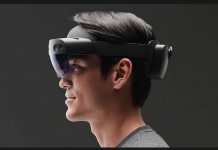Remote Rendering leverages cloud streaming technology to render high-quality 3D content remotely and deliver it to even low-end devices. A clear target here is the HoloLens 2, which has little space for powerful internals but still has a demand for detailed visuals. In an enterprise environment, the availability of high-fidelity renders can be especially important. A higher polygon count can help medical students better understand operating procedures or an engineer can get guidance in a similar fidelity to the real world. “A traditional approach to viewing 3D content on untethered devices is called decimation, which compresses the models and removes polygons. This simplifies the model to a point where it can run on slower GPU hardware,” explained Microsoft. “The result can be a loss of important detail that’s needed to make key business and design decisions. Azure Remote Rendering renders content in the cloud and streams it to devices in real time so that people can use interactive, high-quality 3D models with every detail intact and no compromise on quality.” The experience is available via an SDK, which Microsoft says is easy to integrate into applications. Some of the same tech is likely being used in Project xCloud to deliver game streaming, so this is another example of a crossover between the company’s seemingly unrelated brands. You can sign-up for the Remote Rendering preview on the Azure site, with $280 in free credits available to new users and a 10-minute quickstart tutorial.




